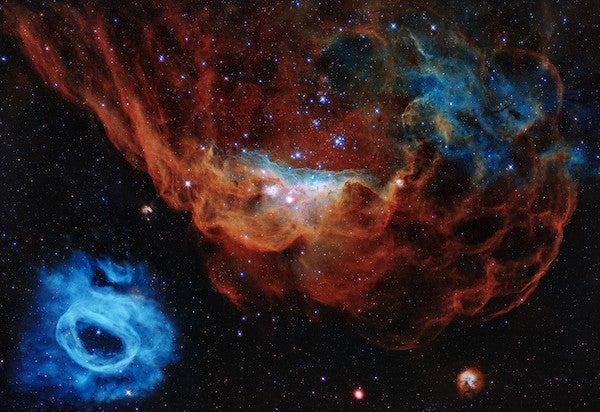Blossoming from deep within the Large Magellanic Cloud (LMC), the unique structures of these two nebulae have earned them the nickname Cosmic Reef. The larger of the two is the star-forming region NGC 2014, appearing orange-red in this newly released Hubble image that spans some 600 light-years. The smaller, bright blue region is NGC 2020.
The two nebulae reside some 160,000 light-years away in the LMC, the Milky Way’s largest satellite galaxy. However, despite their serene appearance, these regions are the birthplace of some of the most energetic, massive stars in our cosmic neighborhood. They showcase this by sporting extremely powerful solar winds and emitting intense ultraviolet radiation.
NGC 2020 is home to a Wolf-Rayet star that’s some 15 times more massive and 200,000 times brighter than the Sun. This mammoth, seen just above the center of the nebula, created the stunning blue gas through a series of eruptions that resulted in the partial loss of its outer envelope.
At the heart of NGC 2014, on the other hand, lies a group of stars, sparkling through the glowing clouds of gas. Each star within is 10 to 20 times more massive than the Sun and unleashes winds strong enough to blast away lower-density gas, creating coral-like structures.
After 30 years of observation, Hubble has proven to be an eye on the sky like no other, capturing the world’s imagination with countless spectacular images. Hubble is expected to remain operational through this decade, with the new James Webb Telescope set to join it in early 2021.










